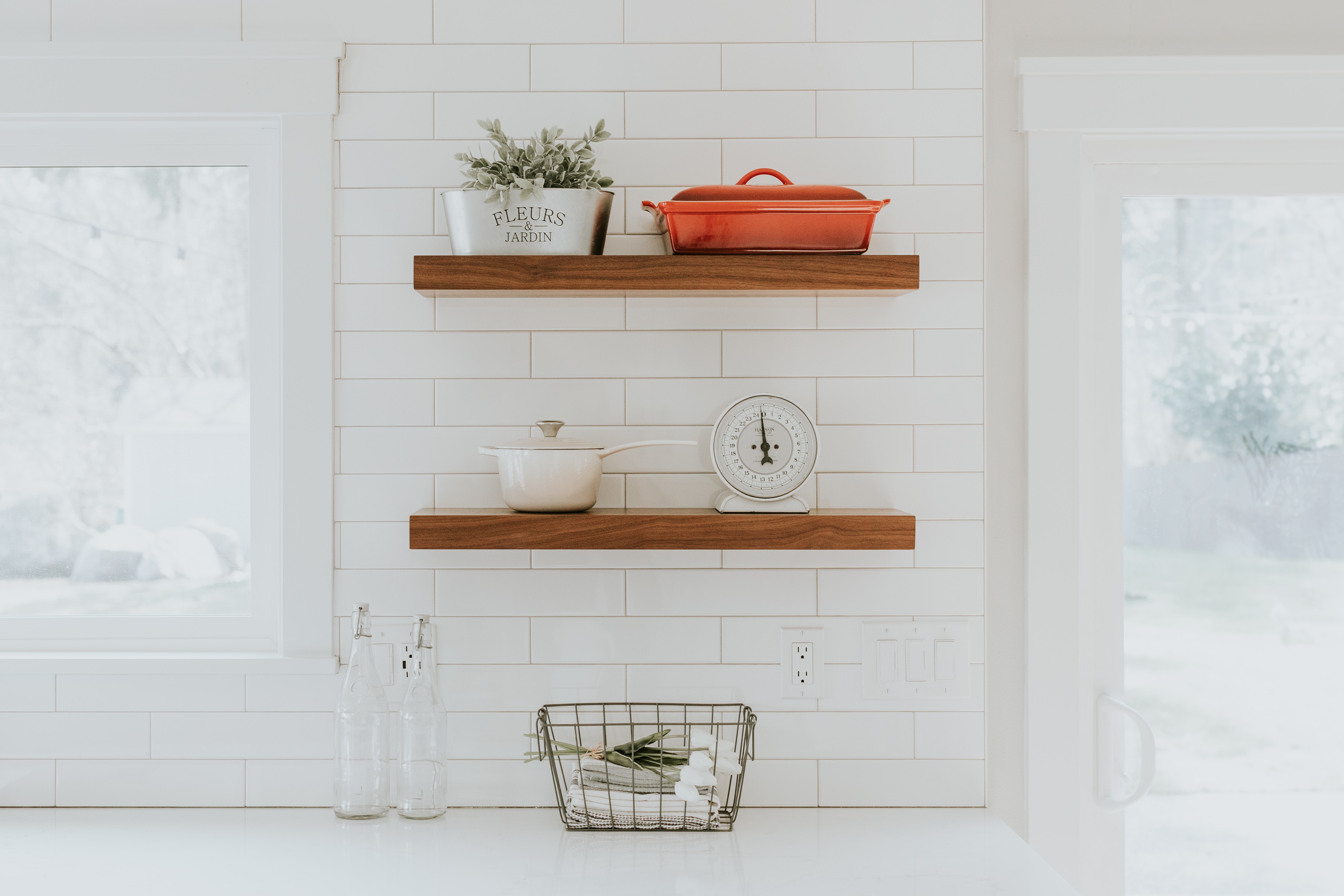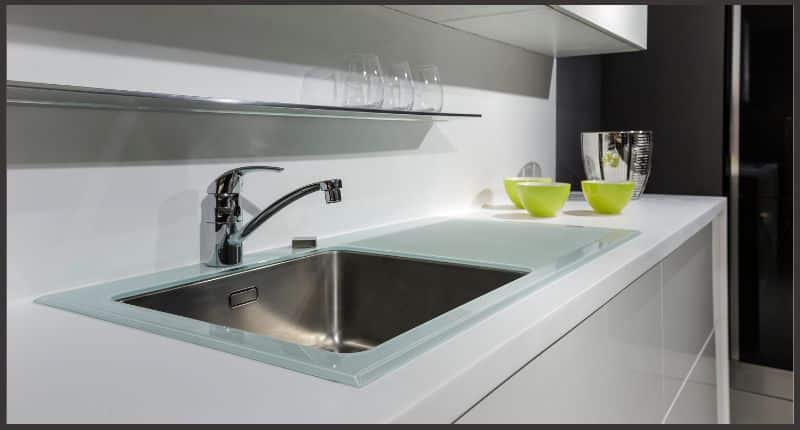Introduction: Keeping a clean and well-maintained kitchen sink is crucial for maintaining a hygienic and functional cooking space. However, over time, the sink drain can become clogged and ineffective due to the accumulation of food particles, grease, and other debris. To ensure that your kitchen sink drain is flowing freely and efficiently, it is important to adopt the best cleaning method. In this article, we will explore various tried-and-tested techniques to unclog and clean your kitchen sink drain effectively. Whether it be using simple household ingredients or investing in specialized drain cleaners, read on to discover the best ways to tackle this common kitchen maintenance issue.
Table of Contents
What is the Best Way to Clean a Kitchen Sink Drain?
Have you ever noticed a foul odor coming from your kitchen sink? Or maybe you’ve experienced water draining slowly, leaving behind a pool of murky liquid. These are all signs that your kitchen sink drain is in need of a good cleaning. A dirty sink drain can lead to a host of problems, from breeding bacteria to causing blockages. In this article, we will explore the best ways to clean a kitchen sink drain and keep it smelling fresh and functioning properly.
Understanding the Anatomy of a Kitchen Sink Drain
Before we delve into the cleaning methods, let’s take a moment to understand the anatomy of a kitchen sink drain. A typical kitchen sink drain consists of several components, including:
- Drain Basket/Strainer: This is the first line of defense that catches solid debris and prevents it from entering the drain.
- P-Trap: The P-shaped pipe below the sink that traps water to prevent sewer gases from entering your home.
- Drain Pipe: This is the pipe that carries water from the sink to the sewer or septic system.
Now that we understand the different components, let’s move on to the best ways to clean a kitchen sink drain.
Method 1: Hot Water Flush
One of the easiest and most effective ways to clean your kitchen sink drain is by flushing it with hot water. This method works well for regular maintenance and can help prevent buildup and clogs.
To do a hot water flush, simply bring a pot of water to a boil. Carefully pour the boiling water down the drain, allowing it to flush away any grease, soap residue, or other debris. Repeat this process a few times to ensure a thorough cleaning.
This method is particularly effective if you have a garbage disposal unit installed in your sink. The hot water will help melt and dislodge any trapped food particles, leaving your drain fresh and clean.
Method 2: Baking Soda and Vinegar
If you’re looking for a natural and eco-friendly way to clean your kitchen sink drain, the combination of baking soda and vinegar is a fantastic option. Baking soda is a mild abrasive that helps scrub away grime, while vinegar is acidic and can dissolve stubborn buildup.
To use this method, start by pouring half a cup of baking soda down the drain. Follow it up with half a cup of vinegar. The mixture will cause a fizzy reaction, breaking down any gunk or residue in its path. Let the mixture sit in the drain for about 30 minutes.
After the 30 minutes have passed, flush the drain with hot water. This will help wash away the loosened debris and leave your drain smelling fresh and clean.
Method 3: Plunging
If your kitchen sink drain is completely clogged and a hot water flush or baking soda and vinegar solution hasn’t done the trick, it’s time to bring out the plunger. A plunger is a handy tool that can help dislodge stubborn blockages.
To plunge your kitchen sink drain, you’ll need a sink plunger with a flat bottom. Place the plunger over the drain, ensuring a tight seal. Give the plunger a few quick and forceful plunges, creating suction and pressure that will dislodge the clog.
After plunging, run hot water down the drain to flush away any remaining debris. Repeat the process if necessary until the drain is clear. It’s important to note that plunging should be done with caution to avoid causing any damage to the pipes or fixtures.
Method 4: Drain Snake/Auger
If the clog in your kitchen sink drain is particularly stubborn and cannot be cleared with a plunger, a drain snake or auger is your next best bet. A drain snake is a flexible, coiled wire that can be manually or electrically operated to reach deep into the drainpipe and break apart the clog.
To use a drain snake, insert the coil into the drain and rotate it clockwise while applying gentle pressure. Keep feeding the snake into the drain until you encounter resistance. Once you’ve reached the clog, continue rotating the snake to break it apart and clear the blockage.
After using the drain snake, flush the drain with hot water to remove any remaining residue. It’s worth mentioning that if you’re not comfortable using a drain snake, it’s best to call a professional plumber to avoid causing further damage.
Preventing Future Buildup and Clogs
Now that you know how to clean your kitchen sink drain effectively, it’s essential to implement preventive measures to avoid future buildup and clogs. Here are some tips to help you maintain a clean and healthy drain:
- Avoid Dumping Grease: Grease is one of the primary culprits behind clogs and buildup. Dispose of grease in a separate container and throw it in the trash instead of washing it down the drain.
- Use a Drain Strainer: Placing a drain strainer or basket over your sink drain prevents food particles and other debris from going down and causing blockages.
- Flush with Hot Water Regularly: Running hot water down the drain on a weekly basis helps prevent grease and grime from accumulating.
- Perform Monthly Maintenance: Use one of the cleaning methods outlined above on a monthly basis to keep your drain free from buildup and odors.
By following these simple preventive measures and periodic maintenance, you can ensure that your kitchen sink drain remains clean, odor-free, and clog-free.
Conclusion
A clean kitchen sink drain is essential for maintaining a healthy and functional kitchen. By utilizing the methods we’ve discussed, such as hot water flushing, baking soda and vinegar, plunging, and using a drain snake, you can keep your drain clear and fresh. Remember to practice preventive measures to avoid future problems and keep your kitchen sink drain in optimal condition. So put on your cleaning gloves and get ready to give your kitchen sink drain the TLC it deserves!

Photo by Jason Briscoe on Unsplash
Additional Guide
The best way to clean a kitchen sink drain is to start by removing any visible debris or food particles. You can use a paper towel or a soft brush to gently scrub the drain cover and remove any buildup. Next, you can pour a mixture of hot water and dish soap down the drain to help loosen any grease or grime. For a deeper clean, you can also use baking soda and vinegar. Simply sprinkle baking soda down the drain, followed by vinegar, and let it sit for a few minutes. Then, rinse with hot water to remove any remaining residue. Regularly cleaning your kitchen sink drain will help prevent clogs and keep it smelling fresh. For more tips on maintaining a functional kitchen, you can check out these related articles: How to Make a Small Kitchen Look Bigger, How Do I Start a Small Kitchen?, Things to Consider When Designing a Kitchen.
FAQs: What is the best way to clean a kitchen sink drain
1. What is the best way to clean a kitchen sink drain?
The best way to clean a kitchen sink drain is to start by removing any visible debris such as food particles or grease. Then, pour a pot of boiling water down the drain to help melt away any built-up grease. Next, mix 1/2 cup of baking soda with 1/2 cup of vinegar and pour the mixture down the drain. Let it sit for 10-15 minutes before flushing with hot water. For stubborn clogs, using a plunger or a drain snake can help to remove the blockage.
2. Can I use chemical drain cleaners to clean my kitchen sink drain?
While chemical drain cleaners can be effective in removing clogs, they are generally not recommended for regular maintenance of kitchen sink drains. Chemical cleaners can be harsh and corrosive, potentially damaging your pipes over time. It’s best to stick to natural methods such as using baking soda and vinegar, or contacting a professional plumber for assistance.
3. How often should I clean my kitchen sink drain?
It is recommended to clean your kitchen sink drain at least once a month to prevent buildup and keep it running smoothly. If you notice slow drainage or foul odors, it may be necessary to clean more frequently.
4. How can I prevent clogs in my kitchen sink drain?
To prevent clogs in your kitchen sink drain, it is important to be mindful of what goes down the drain. Avoid pouring grease, oils, and coffee grounds down the sink as they can solidify and cause blockages. Use a sink strainer to catch food particles and hair, and regularly clean it out. Additionally, run hot water down the drain after each use to help flush away any debris.
5. What should I do if my kitchen sink drain is still clogged after attempting to clean it?
If your kitchen sink drain is still clogged after attempting to clean it with natural methods, it is best to call a professional plumber. They have the expertise and tools to effectively unclog drains without causing further damage to your pipes.


